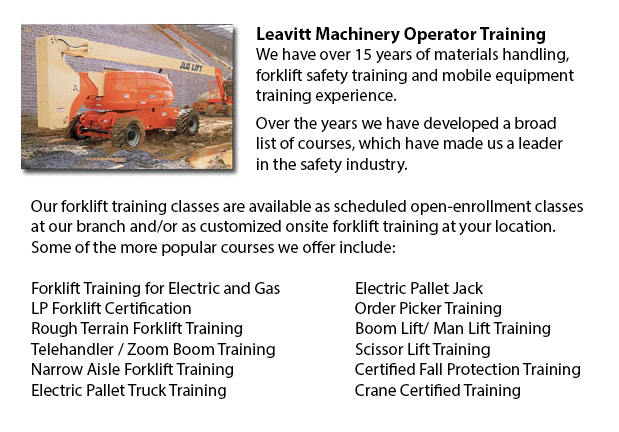
Aerial Platform Training Avondale - Aerial forklifts can accommodate numerous tasks involving high and hard reaching places. Often used to complete regular preservation in buildings with tall ceilings, prune tree branches, elevate burdensome shelving units or fix phone lines. A ladder might also be utilized for some of the aforementioned jobs, although aerial hoists provide more safety and stability when correctly used.
There are several models of aerial platform lifts existing on the market depending on what the task required involves. Painters often use scissor aerial jacks for example, which are classified as mobile scaffolding, useful in painting trim and reaching the 2nd story and higher on buildings. The scissor aerial platform lifts use criss-cross braces to stretch out and lengthen upwards. There is a platform attached to the top of the braces that rises simultaneously as the criss-cross braces lift.
Container trucks and cherry pickers are a different variety of aerial lift. They possess a bucket platform on top of an elongated arm. As this arm unfolds, the attached platform rises. Lift trucks utilize a pronged arm that rises upwards as the lever is moved. Boom lifts have a hydraulic arm which extends outward and raises the platform. All of these aerial lifts call for special training to operate.
Through the Occupational Safety & Health Association, also labeled OSHA, education programs are on hand to help make certain the workers meet occupational principles for safety, system operation, inspection and maintenance and machine load capacities. Employees receive certification upon completion of the course and only OSHA qualified personnel should operate aerial lift trucks. The Occupational Safety & Health Organization has established rules to uphold safety and prevent injury when utilizing aerial lifts. Common sense rules such as not utilizing this apparatus to give rides and making sure all tires on aerial lifts are braced so as to hinder machine tipping are observed within the guidelines.
Regrettably, statistics show that more than 20 operators pass away each year while operating aerial hoists and 8% of those are commercial painters. The majority of these incidents are due to inadequate tire bracing and the hoist falling over; for that reason a lot of of these deaths had been preventable. Operators should ensure that all wheels are locked and braces as a critical safety precaution to prevent the machine from toppling over.
Additional suggestions include marking the encircling area of the device in an obvious manner to protect passers-by and to guarantee they do not come too close to the operating machine. It is crucial to ensure that there are also 10 feet of clearance between any power lines and the aerial lift. Operators of this equipment are also highly recommended to always wear the proper security harness while up in the air.
-
Forklift Certification Courses Avondale
Forklift Certification Courses Avondale - Forklift certification courses really help to be able to make sure that companies using forklifts, follow the local and regional rules. The drivers of the forklift need to go through forklift certification pr... More -
Manlift Certification Avondale
Manlift Certification Avondale - The Elevated Platforms and Manlifts Certification course helps to provide the required training on the work practices, safe operating procedures, rules and regulations regarding the daily activities for the operators... More -
Manlift Operator Training Avondale
Manlift Operator Training Avondale - The aerial lift or manlift is a specialized type of hydraulic platform that is intended to hoist a person vertically giving it an alternate name of a vertical personnel lift. These machinery are widely used for a... More -
Telescopic Training Avondale
Telescopic Training Avondale - Telescopic Handlers are a type of forklift, normally called telehandlers. This machine has been increasing in popularity because of its greater lift heights and its versatility. It is often preferred over the convention... More -
Heavy Equipment Training Avondale
Heavy Equipment Training Avondale - The two most common types of heavy equipment training are classed into the categories of equipment; equipment that is fashioned with rubber tires or those with tracks. The tracked vehicle are heavy duty equipment l... More -
Aerial Lift Train the Trainer Avondale
Aerial Lift Train the Trainer Avondale - The Aerial Lifts Train the Trainer Certification Program would teach trainers how to efficiently train operators in safe industrial mobile equipment operation. Trainers are provided with in-depth instruction a... More -
Overhead Crane Safety Training Avondale
Overhead Crane Safety Training Avondale - The overhead crane safety training program is meant to equip the operators with the right knowledge and skills in the areas of: crane safety measures, accident avoidance, materials handling, and stock and equ... More -
Heavy Equipment Training Schools Avondale
Heavy Equipment Training Schools Avondale - When choosing an operator training course, there are numerous heavy equipment training schools to select from. In order to ascertain the qualifications you would attain, it is very important to check some a... More

Forklift Training Avondale
TOLL FREE: 1-888-254-6157
Avondale, Arizona
forkliftcertificationavondale.com
Email Us
About Us


